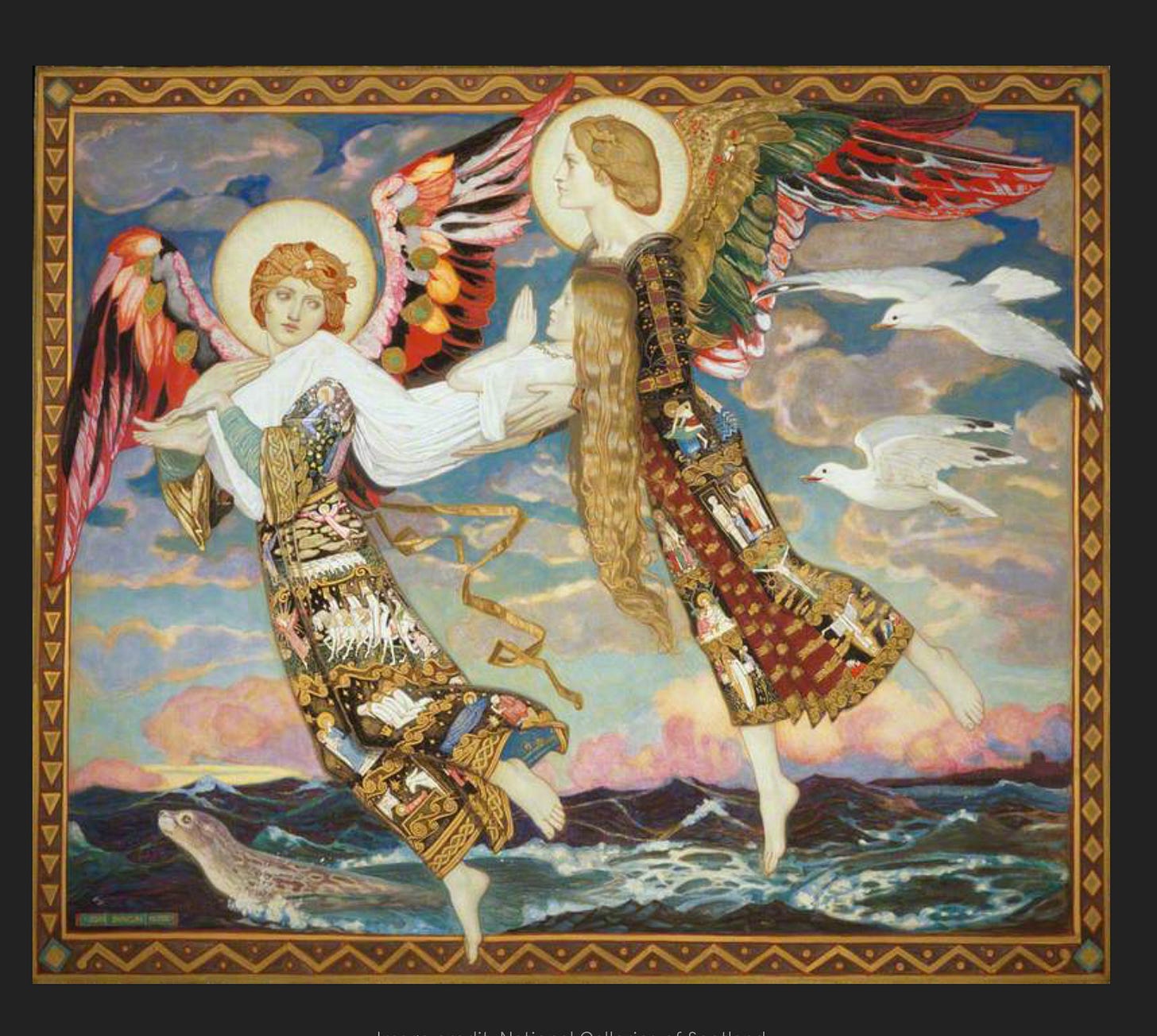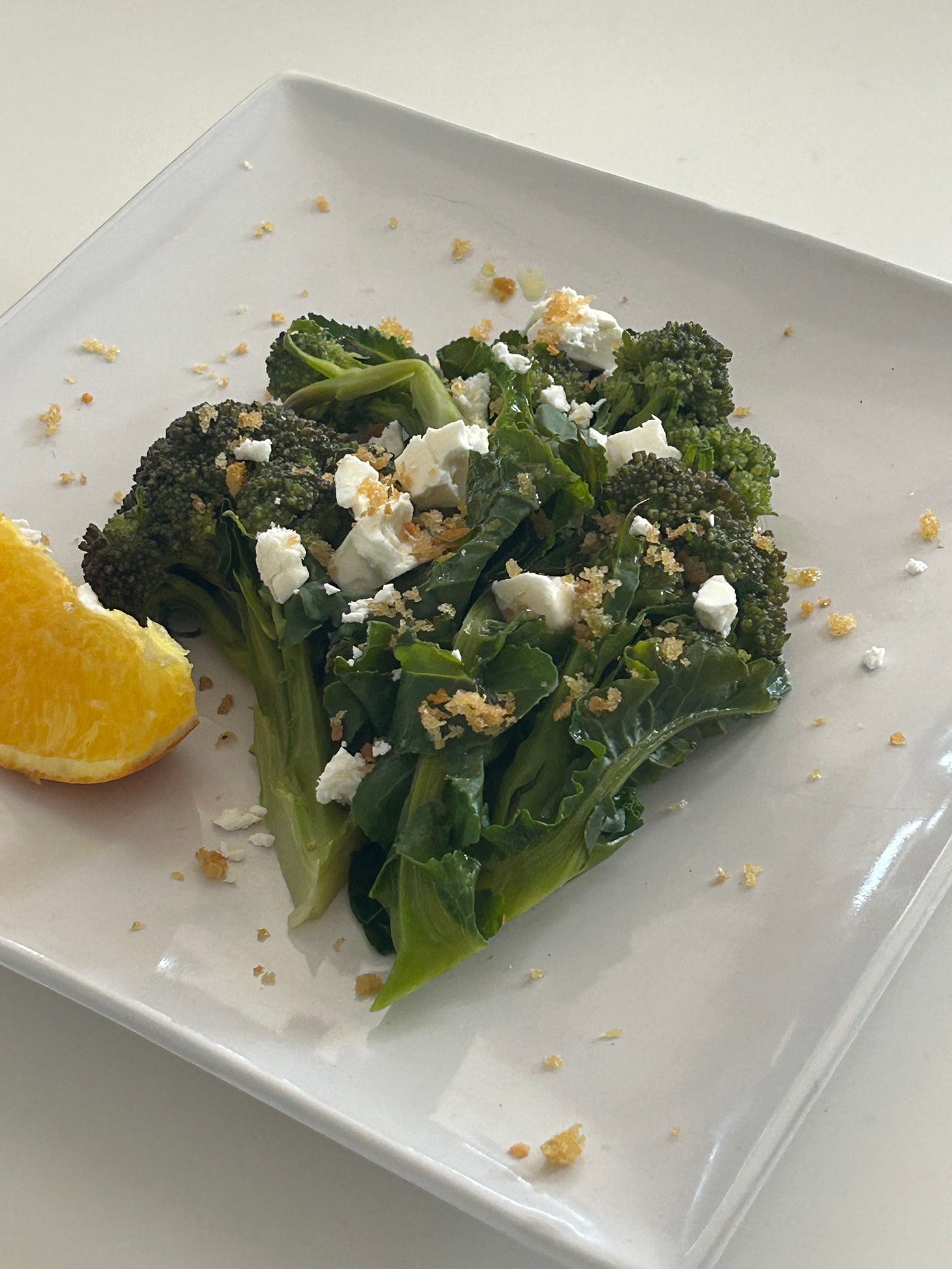Candlemas Day by Marianne Stokes (Tate Gallery)
They are the last romantics, these candles:
Upside-down hearts of light tipping wax fingers,
And the fingers, taken in by their own haloes,
Grown milky, almost clear, like the bodies of saints…
From ‘Candles’ by Sylvia Plath (1932-1963)
When I first started researching festival food about fifteen years ago, I discovered something about this time of year that made the hairs on the back of my neck prickle. The origins of the Celtic festival of Imbolc are truly ancient. The word im’bolc, or ‘oimelc’ in Irish, has something – no-one knows what - to do with milk. The feast coincides with that of St Brigid on February 1st and Catholic tradition holds St Brigid to be Jesus’s wet nurse. Candlemas on the 2nd February celebrates the Feast of Purification of the Virgin Mary. So we get three festivals for the price of one!
Here’s St Bhríde being transported by angels from Ireland to Bethlehem. It’s a bonkers idea but isn’t it a pretty painting? It’s by John Duncan (1866-1945) and now in the Scottish National Gallery. I love the seal leading the way and that dainty angel’s foot just out of the frame.
When I was thinking about this, and also about what Bernard Shaw said about the conversion of paganism to Christianity actually being the conversion of Christianity to paganism, I realised that this is lambing time. Suddenly I was transported back to our ancient nomadic past. The dark days of winter are waning, spring is on the way, lambs are coming and there is fresh ewe’s milk to drink. How long, how very long have humans been celebrating this turn of the year.
After I was born (in mid February), my mother was told by her mother that she couldn’t go out until she had been ‘churched’. Churching was a private ceremony of giving thanks for a safe delivery, but its roots must be old and dark. Like the mother of Jesus, about six weeks after giving birth, women used to be ‘purified’ and all that messiness was blessed away. Country lore also said that until this happened, new mothers could be beguiled by the fairies - maybe that’s what my Grandmother thought. Interestingly after my sister was born Mum didn’t bother. Maybe my Grandmother’s influence had waned by then - or maybe the practice had fallen into disuse by then.
Candlemas is the time to bring back the light. Candles were blessed and even after the Reformation, it was still practised in many households by placing a lighted candle in a window. Even as a non believer I have always been fond of it, as I am of February. It’s not everyone’s favourite but I have a soft spot for my birthday month. It seems a time of hope to me and I like the sentimental fantasy about sleeping animals taking a peek outside to see what the weather is doing. Candlemas is also the day to plant your broad beans – so at last we are on the upward curve into the light.
There are no ritual foods for this time of year, although offerings to St Brigid were laid in a woven basket and left overnight in case the saint chose to visit. Birch twigs were laid by the side of it and St Brigid was bade welcome before the household retired to bed.
According to Bede the Anglo Saxons called February ‘kale monath’ – cabbage month. So I combined it all in one dish of purple sprouting broccoli with feta to make a simple supper for one.
The original version of this recipe that I made back in about 2010, was made with lemon and a sheep’s cheese called ‘Little Urn’, but I can’t get it now. You could use thin slices of Manchego which is also made with ewe’s milk (I think that’s important for this dish) or easily obtained Feta which is most commonly made with a mixture of sheep and goats milk.
Purple Sprouting Broccoli with Feta, Orange and Crumbs
Bring a saucepan of salted water to the boil and drop in the trimmed broccoli. Boil for about 5 minutes until slightly softened but still brightly coloured. Plunge into cold water to hold the greenness.
Whilst the broccoli is cooking take a slice of good bread, a couple of strips of orange rind and blitz into fine crumbs. Fry the crumbs in a mixture of butter and olive oil until crisp and set them aside on kitchen paper.
Drain and pat dry the broccoli. Add a tablespoonful of olive oil to a hot frying pan, then fry a finely chopped clove of garlic for a moment or two, but don't let it brown. Add the broccoli and toss gently in until re-warmed and coated in oil. Lay on a pretty plate.
Crumble the feta over it and sprinkle with the crumbs.
Eat this and think of those herders with their flocks thousands of years ago, watching the sun go down that little bit later over their new born lambs.
Get rid of death. Celebrate increase. Make it be spring.
From ‘February’ by Margaret Atwood (B 1939)







Sounds delicious
This was a lovely morning read, thank you. I love the bonkers painting and want it for my own!!